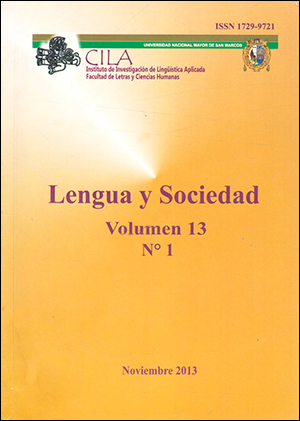Indigenous peoples in Lima: the city as a maloca
DOI:
https://doi.org/10.15381/lengsoc.v13i1.22625Keywords:
Indigenous groups in Lima, migration, deindianizationAbstract
An account is made of the indigenous presence in the city of Lima, pointing out those who in some way assume their ethnic particularity in the context of the city. It is shown that Lima is an ethnically diverse city, as it is home to Aymara, Quechua, inhabitants of various Amazonian ethnic groups, and several groups of non-American descent that develop some level of community life that is evidenced in various ways. The data show the presence of Ashaninka (in Huaycán), Shipibo (in Cantagallo), Awajún people (in Ventanilla) and Matsiguenga (in Puente Piedra) who live more or less grouped together, to some extent as urban indigenous communities. It is noted that the city is a "melting pot" of the indigenous to generate non-indigenous, that is, Creole citizens or those assimilated to the greater western cultural society. How far is each one of them moving away from their indianity?
Downloads
Published
Issue
Section
License
Copyright (c) 2013 Gustavo Solís Fonseca

This work is licensed under a Creative Commons Attribution 4.0 International License.
AUTHORS RETAIN THEIR RIGHTS
a. Authors retain their trade mark rights and patent, and also on any process or procedure described in the article.
b. Authors can submit to the journal Lengua y Sociedad, papers disseminated as pre-print in repositories. This should be made known in the cover letter.
c. Authors retain their right to share, copy, distribute, perform and publicly communicate their article (eg, to place their article in an institutional repository or publish it in a book), with an acknowledgment of its initial publication in the journal Lengua y Sociedad.
d. Authors retain theirs right to make a subsequent publication of their work, to use the article or any part thereof (eg a compilation of his papers, lecture notes, thesis, or a book), always indicating its initial publication in the journal Lengua y Sociedad (the originator of the work, journal, volume, number and date).



























